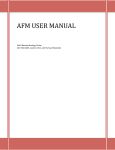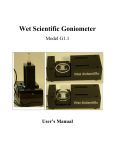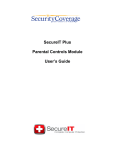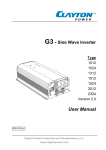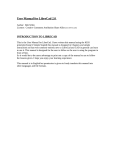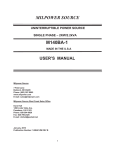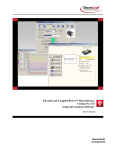Download our Battery Charging Guide
Transcript
Battery Charging Guide Welcome to our handy battery charging guide. This guide will give you some technical information on various battery types and how to handle them. You will need to locate information on the type of battery you have before proceeding. This information is almost always on the battery or device itself. Common applications are listed below. This guide is by no means definitive as there are many kinds of devices that have many different functions. We highly recommend reading your devices’ user manual before attempting charging any kind of battery. Alkaline-‐ NEVER charge alkaline batteries such as standard AA, AAA, 9V, C or D batteries unless specifically labeled “RECHARGEABLE”. They can heat up and cause damage or even fire. Nickle Cadmium (NiCd)-‐ The old standard rechargeable Common Use: • • • • • Used in a very wide range of devices Cordless drills and tools Cordless Home Phones Rechargeable AA & AAA batteries Testing Equipment and 2way radios. Charging Tips: • • • Always attempt to drain the battery to below 25% before recharging These batteries will build a memory if charged too frequently. Use a regulated charger and removed them when fully charged, these batteries will over heat if charged excessively. Never store these batteries for long periods with a low charge. Recharge after use if possible. Nickle Metal Hydride-‐ The new generation NiCd Common Use: • • • • • Used in a very wide range of devices Cordless drills and tools Cordless Home Phones Rechargeable AA & AAA batteries Testing Equipment and 2way radios Charging Tips: • • • These batteries will NOT easily develop a memory, they can be charged frequently Use a regulated charger and removed them when fully charged, these batteries will over heat if charged excessively. Never store these batteries for long periods with a low charge. Recharge after use if possible. Lithium (LiOn, LiPo, LiFe, and others)-‐ a battery for everyday living Common Use: • • • • Found in almost every cordless/rechargeable application New Generation Car, Motorcycle and Boat Batteries (especially electric cars) Personal electronics like cellphones, cameras, laptops and tablets Newer cordless tools and testing equipment Charging Tips: • • • • • • They prefer frequent, partial charges and will not develop a memory Use only regulated chargers specifically designed for your device/battery Never charge a lithium battery with physical damage or visual deformities It is normal for a lithium battery to get warm when charging but if it becomes very hot to the touch then discontinue use and contact a professional. Like all batteries never store for long periods with no charge, always charge your batteries before storing them. If left for long periods without use, the circuitry in a lithium battery can “go to sleep” having the battery “boosted” by a company like ours with the correct equipment can sometimes “wake” it up. CAUTION: Improper charging of any battery especially lithium chemistries can cause a battery to overheat and become a fire hazard. Sealed Lead Acid: Power storage at its best Common Use: • • • • • • Home alarm. Fire security systems (usually in a metal box in a closet or attic) Electric wheel chairs Older automotive booster packs Rechargeable spotlights Commercial exit lights Anywhere long term, high capacity power storage is needed Charging Tips: • • • • • Most devices using these have built in chargers (like security systems) When charging one outside of its device use only a dedicated SLA charger Charge rate should never be greater ¼ of the batteries capacity. i.e. an 8 amp battery should only use a charger that outputs less than 2 amps Never store these batteries for long periods with a low charge. Recharge after use if possible. Always remove from charger promptly after charging Starting, Lighting, Ignition (wet acid battery)-‐ Just like your car battery Common Use: • • • • Cars, Trucks, SUVs Motorcycles, Boats, ATVs Riding lawnmowers, tractors Commercial vehicles, trucks and heavy equipment Charging Tips: • • • • • As with all batteries be careful of connecting positive cables to positive post and negative to negative Most can withstand a higher rate of charge but we do not recommend anything over 12 Amp Never store with low voltage! Use a battery maintainer when storing the vehicle longer than 2 weeks. This device keeps the battery fully charged at all times, especially important on motorcycles, boats, lawnmowers and project cars. Always remove from charger promptly after charging or use a charger with a maintenance setting AGM (Absorbed Glass Mat): when only the best will do Common Use: • • • • • • Car/truck battery replacement High quality & high performance for project cars Fire trucks, Ambulances, Police cursers or anything that has to start every time Vehicles with a lot of electronics of large sound systems Anyone looking for the ultimate in reliability and power for their vehicle. High compression motorcycles. Charging tips: • • • • • • • Use only chargers specifically designed for SLA batteries Never use a charger with a de-‐sulfating setting on these batteries. As with all batteries be careful of connecting positive cables to positive post and negative to negative Most can withstand a higher rate of charge but we do not recommend anything over 20 Amps Never store with low voltage! Use a battery maintainer when storing the vehicle longer than 2 weeks. This device keeps the battery fully charged at all times, especially important on AGM batteries Always remove from charger promptly after charging or use a charger with a maintenance setting Alkaline, Silver Oxide, Primary Lithium, Zinc Air, etc: JUST DON’T DO IT NEVER charge batteries unless specifically labeled “RECHARGEABLE”. These chemistries are generally known to be NON-‐Rechargeable unless otherwise labeled. ALWAYS consult your user’s guide or a Battery Joe professional if you are ever in doubt. Improper charging of batteries can lead to fire, small explosions or exposure to dangerous chemicals. Please exercise caution and take safety measures when charging any kind of battery.




